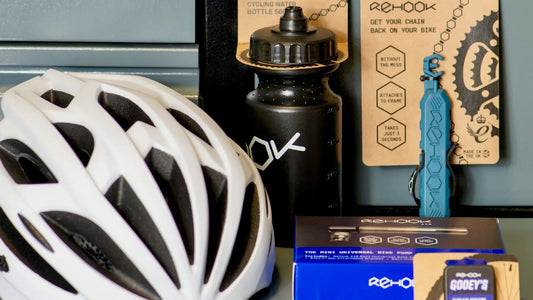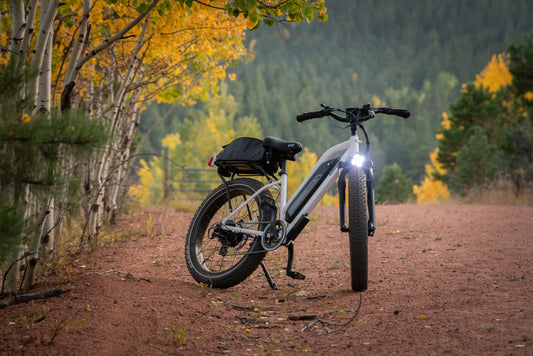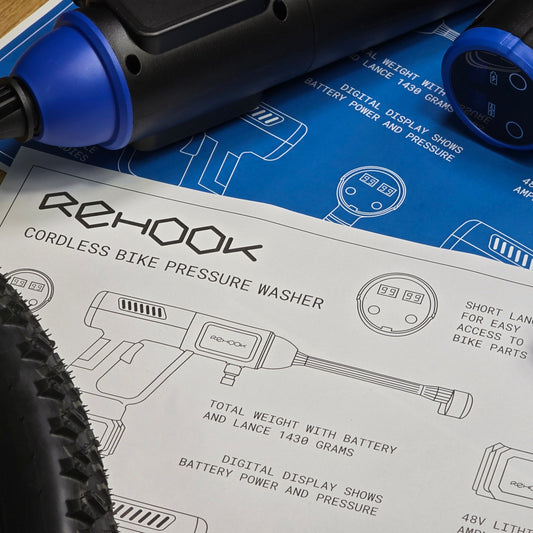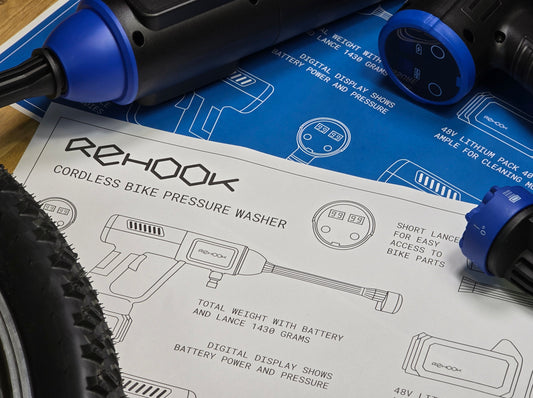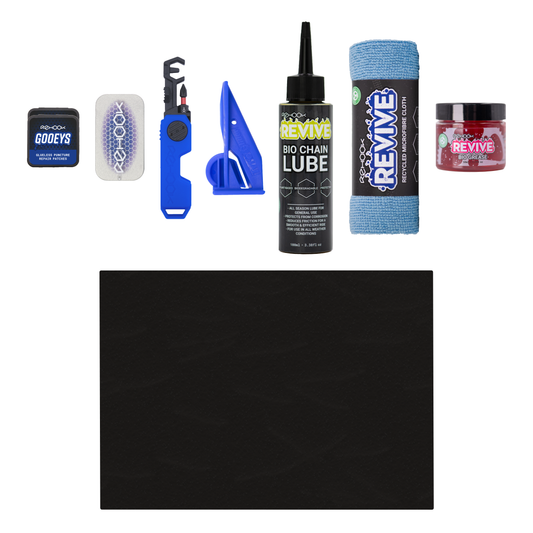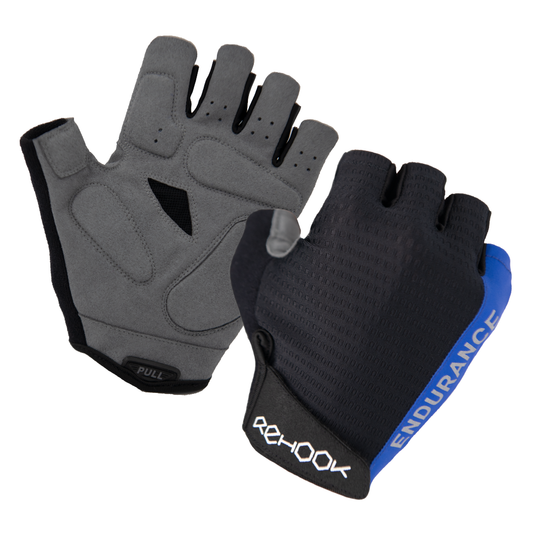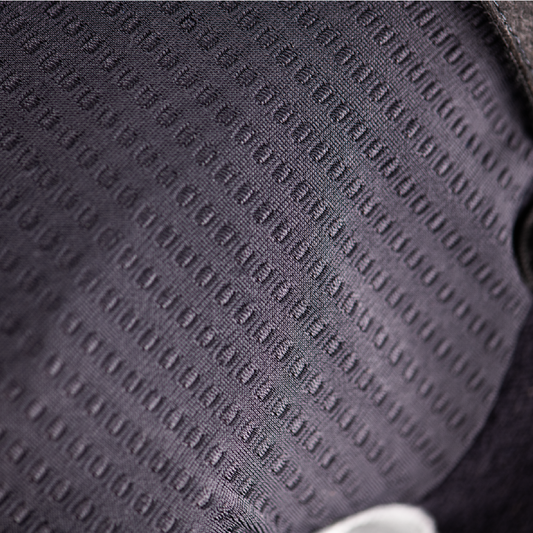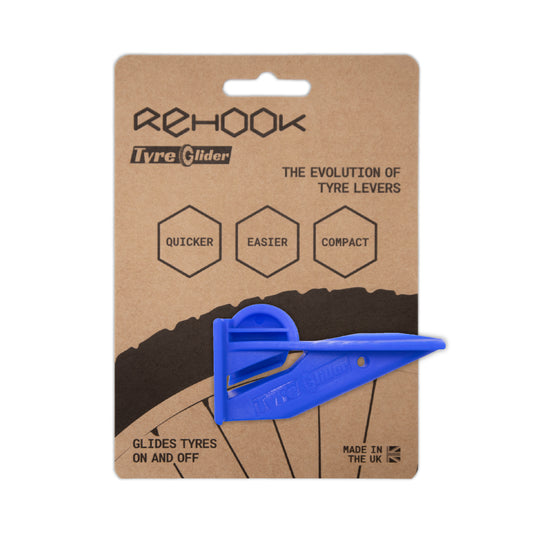Bike Frame and Steering Parts
Drivetrain Parts
Wheel Parts

The image above can be freely shared and reused in its entirety without restriction. It must be used in its entirety, so no edits please.
An important step in performing essential maintenance and repairs is to know your bike inside and out. At Rehook, the correct terminology for these parts is really important to us. So much so, that all new starter learn this on day 1 of joining the business.
When I first started at Rehook, my knowledge of bikes was a little lacking, but through my time here I’ve picked up a lot of new knowledge from writing articles and meeting passionate cyclists, so this blog is my way of sharing that knowledge with all the cyclists that may feel a little unsure on their bike parts. I was in that position myself, and although it may seem intimidating it's really pretty easy to remember once you get used to it! We put together this helpful image as a guide, so whether you're experienced or new to cycling you should be able to follow along using the useful diagram above.
I won’t be going into too much detail here on the specifics of every part, and some of the advantages and disadvantages of certain parts over others, but something like that may come in a future guide, so stay tuned if you’re interested in learning more.
Bike Frame and Steering Parts

The frame of your bike is what everything else is attached to. Some frames are lightweight, some are more durable, they can differ quite a bit depending on the bike and what it is intended for and are typically made from carbon-fibre, aluminium alloys, steel, or even titanium. It’s good to know what kind of frame you have and how to describe each of the parts, so you can get replacements and repairs as they wear.
Fork: The part of your bike frame that connects to your front wheel. Not to be confused with the one you use at the dinner table!
Stem: The part of the bike your handlebars are attached to that allows you to control your wheels by turning them.
Head Tube: The part of your frame that the stem and handlebars attach to, the head tube connects to the fork that moves the front tyre.
Handlebars: The handlebars are what you grip while riding your bike and allow you to steer the front wheel to control your direction. Most handlebars have a bell so you can make yourself known to other cyclists and motorists, or just annoy your neighbours!
Brake Lever/Brakes: Attached to the handlebars, squeezing the brake lever will activate your brakes, slowing your tyres until they bring you to a stop. Just be careful not to stop too suddenly or you may find yourself flying over the handlebars.
Down Tube: The down tube is part of the bike frame that connects the head tube to the bottom bracket shell.
Bottom Bracket Shell: The bottom bracket on a bicycle is the part of the frame that connects the crank and chainring to the bicycle, allowing them to rotate freely. Often abbreviated as BBS.
Shifter: Also known as the bicycle shifter, gear control or gear levers, this is the component used to control the gearing mechanisms and select the desired gear ratio depending on the current situation and terrain. It is usually attached to the frame but the location can vary slightly depending on the model of bike.
Seatstay: The seatstay is a bicycle frame tube that runs diagonally downward from the top of the seat tube to the rear dropouts to help stabilise your saddle.
Seat Tube: Part of your bike frame that attaches to the seat stay, keeping the saddle stable.
Saddle/Seatpost: A fairly simple one, the saddle is the part of the bike you sit on. Atop the seat post, it can be adjusted to better fit your height.

Drivetrain Parts

The chain is a really important part of your bike, as it is what actually lets you move. Without the chain, you could pedal all day and not go anywhere, which is why it’s good to know how to fix your chain in a pinch.
Chain: Your chain is what connects your pedals to your drive-wheel, allowing the motion of pedalling to move you forwards. If your chain slips free, you won’t be able to go anywhere until you hook it back on, which is exactly what our Rehook tool is designed for!
Chainstay: The chainstay/chainstays are the parts of your bike frame that run along the chain joining the bottom bracket shell to the rear axle holders. In short, they are the tube or tubes that connect the bottom bracket (BB for short) to the centre of your rear wheel.
Freewheel/Cassette: A pair of somewhat interchangeable terms among bike retailers, the term freewheel refers to a single set of gears that are screwed onto the bike’s rear wheel, which lock when you pedal the bike forward, forcing the drivetrain to drive the wheel. A cassette on the other hand is a set of sprockets found on your bike’s rear hub that are held together by something called a lockring. Depending on your bike you could have either of these, as a freewheel is usually better for casual riding on streets and a cassette would usually better for mountain biking and off-road riding. If you’re unsure which you have, it’s worth checking so you know what your bike excels at.
Drivetrain: A bit of a catchall term that refers to a mechanism that transfers the power from pedalling to moving the bike tyres.
Derailleur: The derailleur is the device that keeps your chain tight and allows you to change gears by moving the chain from one sprocket to another. There are two of them on your bike chain, one of the front and one on the rear. Knowing how to adjust your derailleur is essential for changing gears while on the go. Don’t worry about the spelling, it’s just pronounced “Derailer”!
Crank: The centre of your bike, the crank is what your pedals are attached to in order to move your chain and create forward motion.
Chainring: The chainring is an extremely important part of your bike. Attached to the crank, the chainring is what transfers the energy generated by pedalling and turning the crank to the chain.
Pedal: Another easy one, the pedals are what you rest your feet on and connect to the crank, and are essentially what power the bike through the pedalling motion.

Wheel Parts

There’s a lot more to tyres than it may at first seem, and fixing one isn’t always as easy as just popping on a new one. The exact types of tyre on your bike will depend on what terrain it is intended for cycling, road and off-road bikes having wildly different tyres. It’s good to have a working knowledge of them so you can change and adjust them on the go.
Tyre: Another fairly self-explanatory one, your tyres are what fit around the wheel as a whole to give you a proper grip on the terrain. The specific type of tyre you’ll want for your bike depends on what you want to use it for, so be aware of the type of terrain you’ll be cycling on and choose appropriate tyres.
Tyre Rim: The rim of the tyre is the metal loop that the rubber tyre itself fits around. These can be made of various materials depending on the type of bike, with some being more lightweight and some being more durable for different types of cycling.
Spoke: The spokes are multiple rods that connect the tyre rims to the hub of the tyre. There are quite a few of them, and it can be a real pain to figure out if one is broken, so take good care of your tyres!
Hub: The hub is the center of the tyre, usually consisting of an axle, bearings and a hub shell. Hub designs can vary depending on the type of bike, but they are essential to the tyres as they basically connect and hold everything together, as the name suggests.
Valve: There are two types of valve your bike will likely use, the more common is called a Schrader valve, and the other type is called a Presta valve. The valve is for inflating your tyres, so it is a good idea to make sure your bike pump is compatible with the type of valve you have or get a universal pump like Rehook AIR that works with both kinds.

Those are some of the most common parts you will find on most bikes. Of course there are plenty of different types of bikes out there that will vary to different degrees. More specialised bikes and electric bikes for example may be extremely different, while some bikes may only be slightly different depending on the make and model. For now though, I hope this guide has been helpful, and you can at least name a few extra bike parts!

